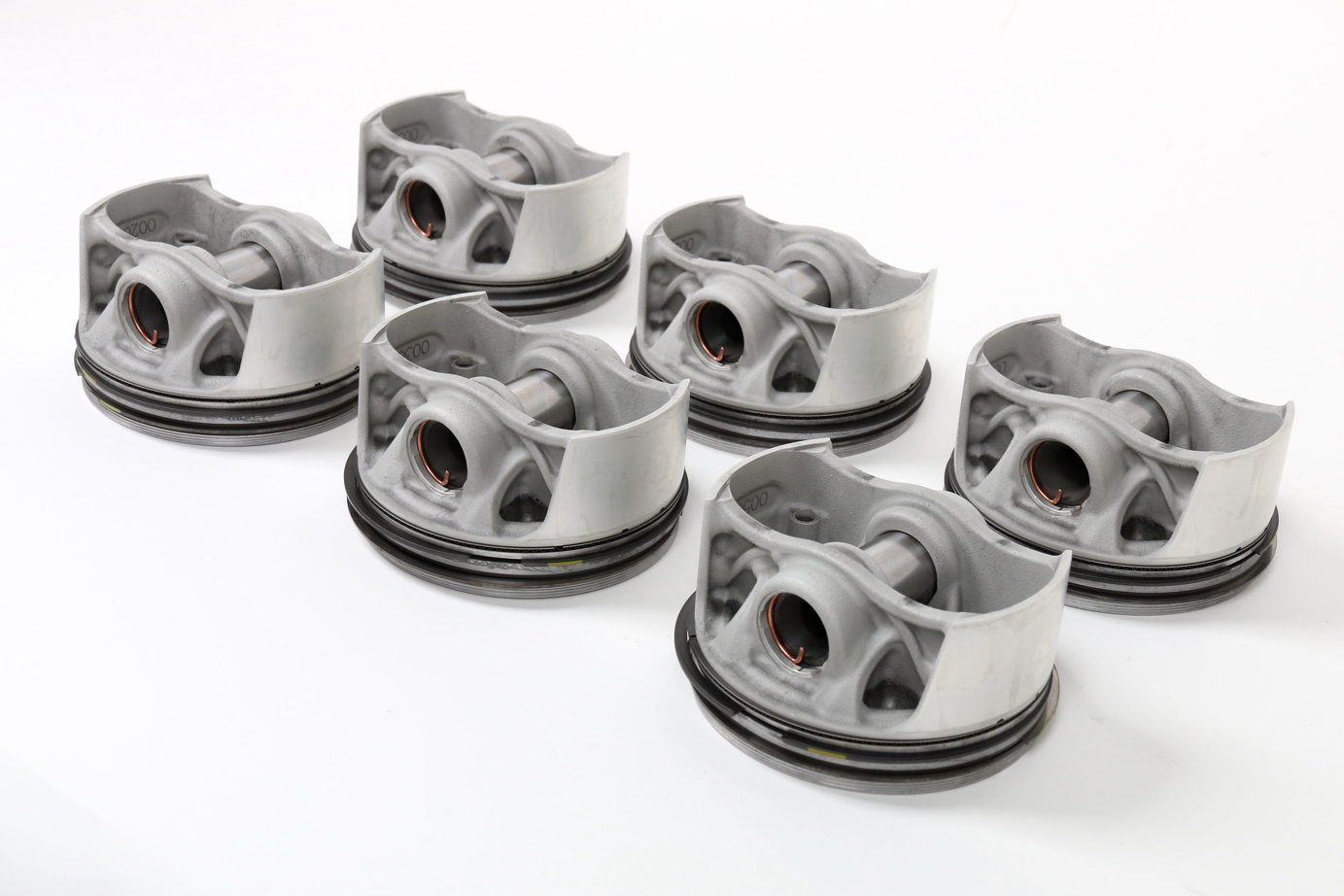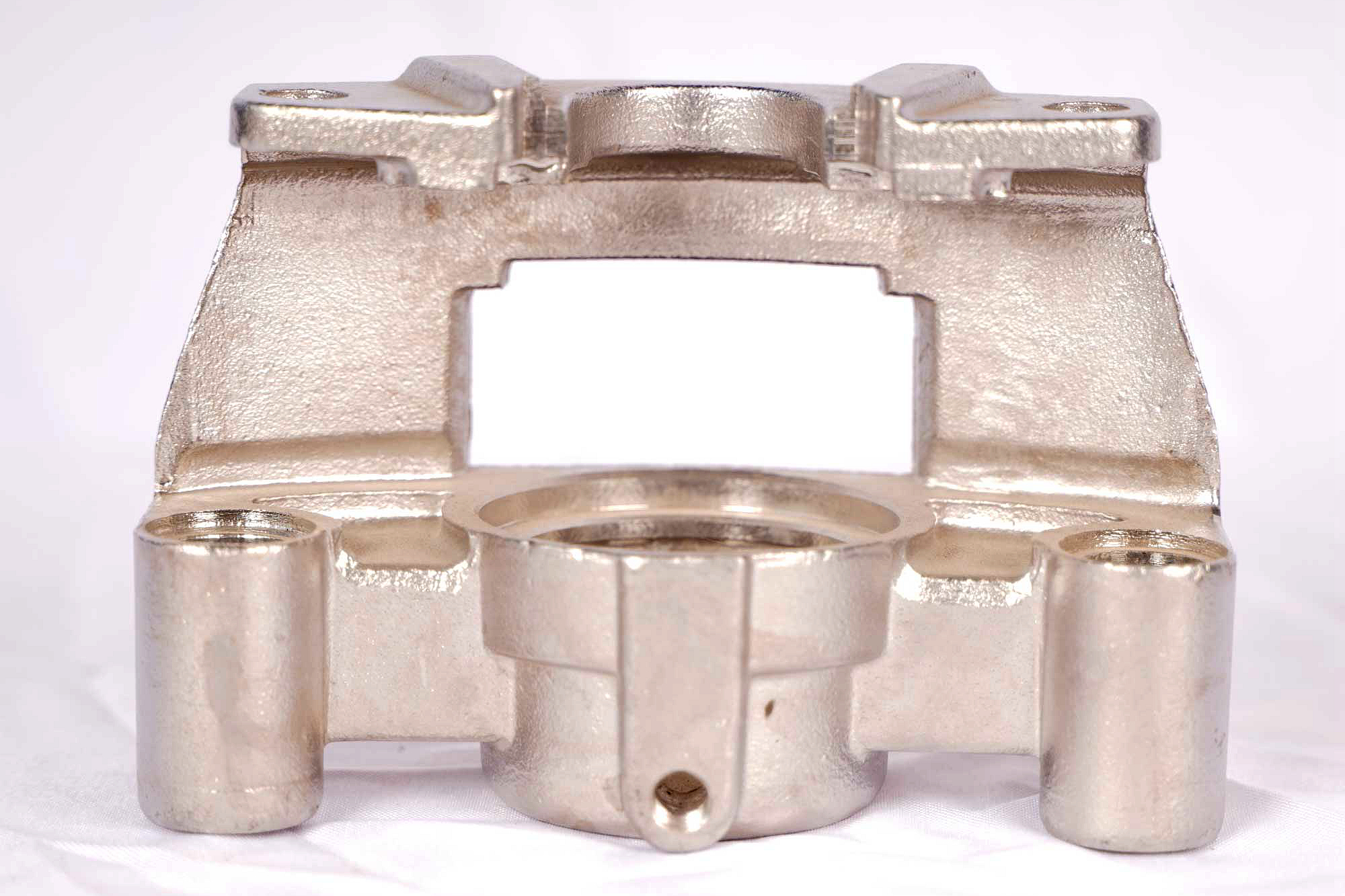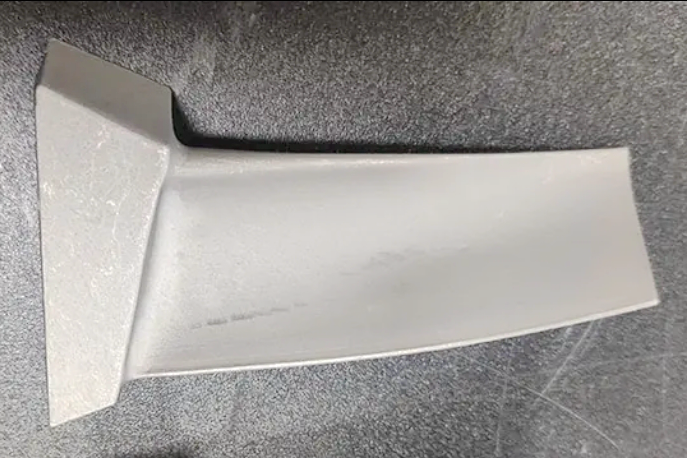Preventing Oxidation in Superalloy Components with Vacuum Heat Treatment for Enhanced Purity
In high-performance materials, superalloys are indispensable for components operating in extreme conditions, especially those exposed to high temperatures and mechanical stress. These superalloys, often used in aerospace and aviation, power generation, oil and gas, and other critical industries, must maintain their integrity, strength, and purity to perform reliably over long operational lifetimes. One of the most significant challenges in superalloy manufacturing is preventing oxidation. In this process, the material reacts with oxygen, often resulting in the degradation of mechanical properties and the formation of unwanted phases.
Vacuum heat treatment is a highly effective method for preventing oxidation, ensuring that superalloy components remain pure and perform optimally in harsh environments. This blog will explore how vacuum heat treatment prevents oxidation, the types of superalloys most affected by oxidation, the post-processing techniques like Hot Isostatic Pressing (HIP), and testing methods such as Metallographic Microscopy. We will also discuss the industries where oxidation resistance is crucial to maintaining high performance.

Process Explanation
Vacuum heat treatment is a thermal process performed in a controlled vacuum environment, which prevents the superalloy from being exposed to oxygen and other contaminants during heating. The primary goal of this treatment is to prevent oxidation, decarburization, and the formation of unwanted phases on the alloy's surface. The process starts by placing the superalloy component in a vacuum chamber, removing the air to create a near-perfect vacuum. This vacuum environment ensures that no atmospheric gases, particularly oxygen, interact with the component’s surface, making it especially important for parts like turbine blades and other precision-engineered components.
Once the vacuum is established, the superalloy is heated to a specific temperature range, typically between 650°C and 1150°C, depending on the alloy type and desired outcome. The heating cycle varies to ensure that the material undergoes the appropriate phase transformations for optimizing its mechanical properties, such as strength, flexibility, and creep resistance. This controlled heating and cooling process is performed without the risk of oxidation, ensuring the superalloy maintains its purity and chemical composition throughout the treatment. For alloys used in high-performance applications like aerospace, such as Inconel, precise temperature control during heat treatment is critical to ensure the final component’s durability.
One of the significant advantages of vacuum heat treatment is its ability to achieve uniform heating without introducing oxidation or other surface contamination. Oxidation, if left unchecked, can lead to unwanted oxide layers or scales forming, which weaken the material and reduce its long-term performance. The vacuum heat treatment ensures that oxidation is effectively prevented, preserving the superalloy’s desired microstructure. This is essential for producing high-performance superalloy components used in extreme temperature and pressure environments, such as those found in gas turbines.
During the process, the alloy undergoes grain refinement and phase transformations, which are crucial for achieving high strength and corrosion resistance. The thermal treatment also promotes solid solution strengthening, where solute atoms are dissolved into the metal matrix, enhancing the alloy’s thermal expansion and creep resistance. This leads to improved mechanical properties, particularly for alloys used in components exposed to high thermal and mechanical stresses in sectors like petroleum and shipbuilding.
Typical Superalloys Used in Oxidation-Sensitive Applications
Superalloys are designed to perform in demanding environments, often where other materials fail due to their susceptibility to oxidation, high-temperature degradation, or corrosion. There are several types of superalloys, each with distinct properties suited to specific applications, and each benefits significantly from oxidation prevention through vacuum heat treatment:
Nickel-Based Superalloys
Nickel-based alloys such as Inconel 718, Inconel 625, and CMSX-10 are commonly used in aerospace and power generation industries. These alloys are prized for their excellent high-temperature strength and oxidation resistance. Components like turbine blades, engine casings, and combustion chambers are exposed to extreme heat and oxidative conditions in these applications. Vacuum heat treatment plays a critical role in preserving the purity of these alloys, preventing oxidation, and ensuring that the alloys perform optimally under thermal stress.
Cobalt-Based Superalloys
Cobalt alloys, like Stellite 6 and Stellite 21, are used in applications that demand high wear resistance and strength under high temperatures. These alloys are often used in the aerospace, petrochemical, and defense industries. Due to their high melting point and resistance to oxidation, cobalt-based alloys are ideal for components like valves, pumps, and exhaust systems. Vacuum heat treatment ensures that oxidation does not degrade these components during operation.
Titanium Alloys
Titanium alloys, such as Ti-6Al-4V and Ti-5553, are widely used in aerospace and automotive applications due to their high strength-to-weight ratio and excellent corrosion resistance. Titanium is particularly susceptible to oxidation at high temperatures, weakening the material and impacting its structural integrity. Vacuum heat treatment is essential for preventing oxidation and ensuring that titanium components retain superior mechanical properties.
Iron-Based Superalloys
Alloys such as Nimonic 263 and Rene 104 are iron-based superalloys used in high-temperature applications such as gas turbines and aircraft engines. These alloys are engineered for superior high-temperature performance and oxidation resistance. Vacuum heat treatment is essential in these alloys to maintain their purity and avoid oxidation during manufacturing.
Post-Processing Techniques Following Vacuum Heat Treatment
Once a superalloy has undergone vacuum heat treatment, several post-processing techniques are applied to enhance the material’s properties further and ensure it meets stringent requirements for high-performance applications:
Hot Isostatic Pressing (HIP)
Hot Isostatic Pressing (HIP) eliminates porosity in superalloy components, a common issue in cast parts. By applying high pressure and temperature in an inert atmosphere, HIP eliminates internal voids and improves the material's overall density and mechanical properties. This post-treatment is especially important for turbine blades and jet engine components, where even minor porosity can lead to fatigue or failure. HIP ensures the component is fully dense, with improved fatigue resistance and enhanced overall performance.
Surface Finishing
After vacuum heat treatment, components may undergo additional surface finishing processes, such as grinding, polishing, or coating. These processes are critical for ensuring the material's surface is smooth, free of oxidation or surface defects, and ready for its final application. Thermal barrier coatings (TBCs) are often applied to enhance oxidation resistance and improve the component’s ability to withstand high temperatures. This is particularly important for parts exposed to extreme thermal environments, such as gas turbine blades and exhaust systems.
Thermal Barrier Coatings (TBCs)
For parts exposed to extreme heat, such as turbine blades and exhaust systems, applying thermal barrier coatings (TBCs) provides an extra layer of protection against oxidation and thermal degradation. These coatings insulate the substrate from heat, reducing the need for frequent maintenance and extending the lifespan of critical components. TBCs ensure high performance in aerospace and energy applications where temperature cycling and oxidative environments are prevalent.
Machining
Precision machining techniques achieve the desired geometry and surface finish for superalloy components. Post-heat treatment machining ensures that the final component meets the required dimensional tolerances and has a high-quality surface free of oxidation or other contaminants. This step is critical for ensuring parts like turbine discs and other precision-engineered components perform optimally in demanding applications, such as jet engines and aerospace systems.
Testing for Oxidation Resistance
Once superalloy components have undergone vacuum heat treatment and post-processing, testing methods are employed to ensure they meet the required oxidation resistance, strength, and overall performance standards. These tests are essential for validating the efficacy of the heat treatment process and ensuring that the components will perform reliably in their respective applications:
Oxidation testing, specifically isothermal oxidation tests, assesses how well a superalloy resists oxidation at elevated temperatures. These tests involve exposing a sample to a high-temperature environment for a specified period and measuring the weight gain due to oxidation. The results help determine the oxidation rate and the effectiveness of the vacuum heat treatment in preventing surface degradation. Glow discharge mass spectrometer (GDMS) is a powerful tool for evaluating elemental composition, which is crucial for understanding oxidation resistance.
Tensile and fatigue testing are essential for evaluating the durability of superalloy components, particularly those exposed to high temperatures and mechanical stresses. Tensile tests measure the material's ability to withstand stretching forces, while fatigue testing simulates repeated stress cycles. Both tests ensure that the superalloy components remain durable in challenging service conditions. Fatigue testing is especially important for components that will experience cyclic loads, such as turbine blades, where oxidation can exacerbate wear.
X-ray diffraction (XRD) is used to analyze superalloy components' crystal structure and phase composition. By examining the diffraction patterns, engineers can detect the presence of unwanted oxide phases that may have formed during the heat treatment or subsequent service. This helps ensure that the material remains in its desired state and retains its oxidation resistance. X-ray inspection is another method used for internal examination, ensuring that no internal oxidation occurs that could compromise the structural integrity of the component.
Metallographic analysis, including scanning electron microscopy (SEM), allows engineers to examine the microstructure of superalloy components. This analysis helps identify signs of oxidation or other structural defects that may have occurred during processing. It also helps assess the effectiveness of the vacuum heat treatment process in preserving the alloy’s integrity. Scanning electron microscopy (SEM) provides high-resolution imaging, making detecting fine details such as oxide formation or surface degradation easier.
Non-destructive testing (NDT) techniques such as ultrasonic testing, X-ray inspection, and eddy current testing detect internal flaws and defects in superalloy components without damaging the part. These tests are essential for ensuring the material is free of oxidation-induced cracks or voids that could compromise its performance in high-stress applications. X-ray inspection provides an in-depth look at the component’s internal structure, ensuring no oxidation has gone undetected.
Industry and Application of Superalloys with Enhanced Oxidation Resistance
Superalloys with enhanced oxidation resistance are critical in industries where high temperatures and mechanical stresses can lead to material degradation. These industries rely on vacuum heat treatment to ensure that components maintain their purity and structural integrity in challenging environments.
Aerospace
In the aerospace industry, superalloys are used in components such as turbine blades, engine casings, and exhaust systems. These parts are exposed to extreme temperatures and oxidative environments, making oxidation resistance crucial for long-term performance. Vacuum heat treatment ensures these components maintain their strength, fatigue, and oxidation resistance during flight operations. Superalloy turbine blades are treated to prevent oxidation, ensuring they can withstand the harsh operating conditions of jet engines and maintain peak performance.
Power Generation
In power generation, superalloy components like gas turbines, steam turbines, and heat exchangers are subjected to high temperatures and oxidizing conditions. Vacuum heat treatment prevents oxidation, ensuring these components can operate efficiently and reliably over long periods, reducing downtime and maintenance costs. Gas turbines and other high-temperature components are treated to resist oxidation and corrosion, ensuring power plants run efficiently for extended operational cycles.
Oil and Gas
The oil and gas industry uses Superalloys in critical components such as pressure vessels, valves, and pumps. These parts must withstand high pressure and temperatures, and oxidation resistance is vital to ensure their long-term durability in harsh environments. Vacuum heat treatment ensures that components like superalloy pumps and valves resist oxidative degradation, maintaining their functionality and performance under extreme conditions.
Automotive
High-performance automotive components like turbochargers, exhaust systems, and engine parts require superalloys that can resist oxidation at high temperatures. In the automotive industry, vacuum heat treatment ensures these components remain functional, corrosion-resistant, and durable over their operational lifespan. Superalloy turbochargers and exhaust systems benefit from enhanced oxidation resistance, allowing them to withstand the thermal stresses and corrosive conditions in modern, high-performance engines.
Marine
In the marine industry, engines and propulsion systems operate in high-temperature and corrosive environments. Superalloys treated with vacuum heat treatment are ideal for these applications, offering enhanced resistance to oxidation and corrosion for long-term reliability. Components like superalloy propulsion systems are treated to prevent oxidation, ensuring that marine systems maintain optimal performance and durability in demanding saltwater and high-temperature conditions.
Chemical Processing
In the chemical processing industry, reactors, distillation columns, and heat exchangers must maintain their purity and performance in high-temperature, corrosive environments. Vacuum heat treatment prevents oxidation and ensures these components perform optimally. Superalloy reactor components, for example, are treated to ensure they retain their resistance to oxidation, making them essential for the safe and efficient processing of chemicals under high-temperature conditions.
FAQ Section
How does vacuum heat treatment prevent oxidation in superalloy components?
What types of superalloys benefit most from oxidation prevention during vacuum heat treatment?
What is the role of hot isostatic pressing in enhancing oxidation resistance?
How do thermal barrier coatings contribute to the oxidation resistance of superalloys?
What testing methods are used to evaluate the oxidation resistance of superalloy components?



